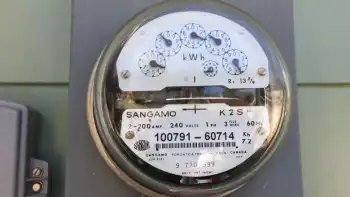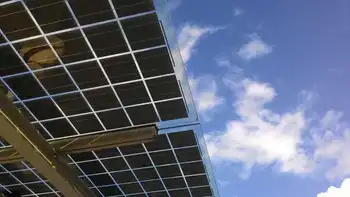Utility helps Habitat for Humanity go solar
Never mind that solar panels on a home will eventually pay for themselves by slashing the electricity bill. In a state where the median home price now stands at $586,000, many families stretch their budgets to the breaking point just to cover the mortgage.
So Pacific Gas and Electric Co. has decided to pay for solar power on every house that Habitat for Humanity builds in Northern and Central California during the next year, about 65 homes in all.
Habitat home buyers help build their houses in return for a low price, and they typically can't afford solar. Even with government rebates, home solar systems cost $17,000 or more. PG&E will spend about $1.2 million on the project, covering the cost of the panels and installation. The home buyers will get radically lower electrical bills as a result.
"We saw an opportunity to really get some savings for these families," said Ophelia Basgal, PG&E vice president of community initiatives.
PG&E has already installed solar panels on individual Habitat homes in the past. But this marks the first time the San Francisco company has agreed to cover every house Habitat builds in the utility's area. The money, considered a charitable gift, will come from profit that otherwise would have gone to PG&E shareholders.
Habitat hopes to enlist other utilities around the country in similar programs. The 31-year-old organization, which has built more than 225,000 homes worldwide, already gets wall insulation and energy-saving windows from other corporations. Solar panels are a logical addition, said Mark Crozet, Habitat's senior vice president for development.
"For us it's not so much an environmental thing - it's a cost issue," he said. "It's a piece of their income that these families don't have to spend on electricity. It's a big increase in the quality of life."
Denise Miyajima owns one of the Habitat homes that PG&E already outfitted with solar power, near the Daly City BART station. The panels don't supply all the power her two-story, three-bedroom house needs. But they help. She spends about $310 per year on electricity, she said, or an average of about $26 per month.
Miyajima, a single mother who works in the admissions department of San Francisco State University, didn't expect solar power to be part of the deal when she first looked into Habitat. "I thought it was too good to be true. Like the house," said Miyajima, 40.
She wouldn't have been able to buy a solar system on her own, she said. She did not, however, help install the panels, even though she helped build the house.
"I'm a chicken," Miyajima said. "I wouldn't go on the roof."
Related News

Rising Electricity Prices: Inflation, Climate Change, and Clean Energy Challenges
WASHINGTON - In recent months, consumers have been grappling with a concerning trend: rising electricity prices. This increase is not merely a fluctuation but a complex issue shaped by a confluence of factors including inflation, climate change, and the transition to clean energy. Understanding these dynamics is crucial for navigating the current energy landscape and preparing for its future.
Inflation and Its Impact on Energy Costs
Inflation, the economic phenomenon of rising prices across various sectors, has significantly impacted the cost of living, including energy bills. As the price of goods and services increases, so too does the cost of producing and…





